…When things aren’t so simple
Though it’s interesting to learn the intricacies of the most complex systems on vehicles, such as the various Mercedes-Benz traction control series we have covered now for well over a year, workbay work consists of solving gritty, realworld problems, not all of them conceptually 7. Often there is more than a single problem on a car; often there is the residue of previous repairs, not all expertly done. Beyond that, car owners sometimes skip routine maintenance, don’t notice a problem or seem to wait for it to self-heal.
So every once in a while (this being one of those once’s) we need to review cars repaired in shops we
know or have heard about, shops without a full set of replacement parts on hand for ready SWAG test shops without every available special tool, shops working under the multiple pressures of time, money and other work that also has to be done. Repair shops in the real world.
These problems and solutions aren’t in any defined order, because the cars coming into your workbay don’t bring their problems and require their solutions in any defined order. Some of the problems could potentially have arisen from other causes; sometimes a shop is just lucky and sometimes not.
OK, let’s get to work!
 The motorist called with a problem: Her spotlessly maintained 20-year-old Benz was suddenly very hard to steer, and there was oil leaking from somewhere near the front of the engine. Surmising the power steering pressure hose might have cracked, the shop foreman asked her, “Is there any oil on the exhaust manifold?†“What’s an exhaust manifold?†was the answer.
The motorist called with a problem: Her spotlessly maintained 20-year-old Benz was suddenly very hard to steer, and there was oil leaking from somewhere near the front of the engine. Surmising the power steering pressure hose might have cracked, the shop foreman asked her, “Is there any oil on the exhaust manifold?†“What’s an exhaust manifold?†was the answer.
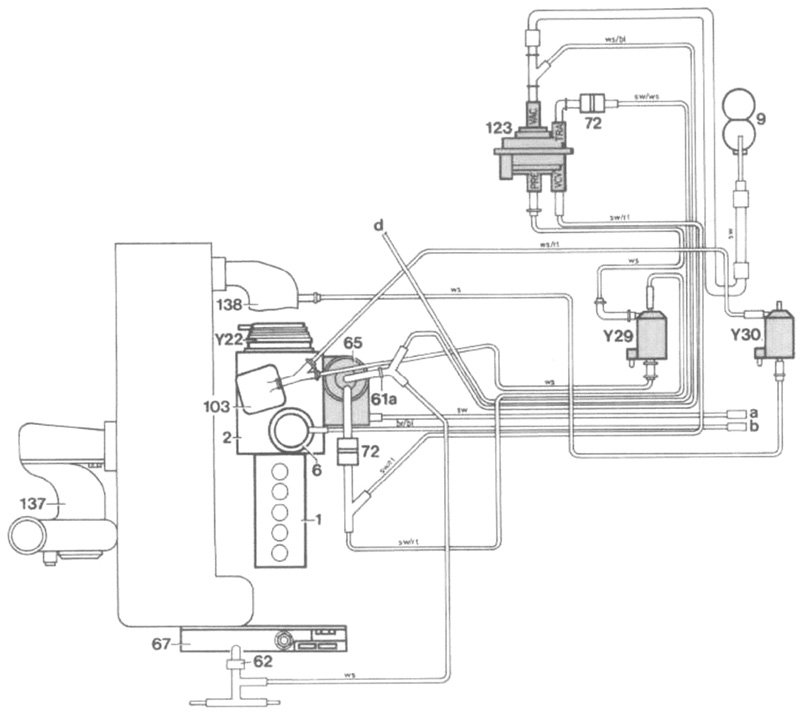 To avoid the risk of smoke and fire if there were oil on the pipe, he towed the car in, to find his telephone diagnosis was exactly correct. It was a simple matter to replace the hose and bleed the system, and a somewhat less simple matter to clean up all the oil to the original state. But it wouldn’t have done to leave a single drop to fall on her garage floor. Quite a few cans of engine cleaner and shop towels later, the car was ready.
To avoid the risk of smoke and fire if there were oil on the pipe, he towed the car in, to find his telephone diagnosis was exactly correct. It was a simple matter to replace the hose and bleed the system, and a somewhat less simple matter to clean up all the oil to the original state. But it wouldn’t have done to leave a single drop to fall on her garage floor. Quite a few cans of engine cleaner and shop towels later, the car was ready.
 Or so they thought. A day or so later the motorist called back. Her air conditioning was suddenly blowing hot air, and ‘all the dash lights were flashing on and off.’ With the car back in the shop, they set to work on the various problems. Perhaps oil might have gotten into the alternator and somehow contaminated the brushes? Hard to imagine it could have soaked something on the other side of the engine that much. The A/C compressor is sealed tight, but it’s right under the PS pump, so maybe the oil got onto the magnetic clutch? Jumpering the clutch, however, kept it connected and the duct air cold. And what about all those warning lights? After much cleaning and probing, the answer became clear.
Or so they thought. A day or so later the motorist called back. Her air conditioning was suddenly blowing hot air, and ‘all the dash lights were flashing on and off.’ With the car back in the shop, they set to work on the various problems. Perhaps oil might have gotten into the alternator and somehow contaminated the brushes? Hard to imagine it could have soaked something on the other side of the engine that much. The A/C compressor is sealed tight, but it’s right under the PS pump, so maybe the oil got onto the magnetic clutch? Jumpering the clutch, however, kept it connected and the duct air cold. And what about all those warning lights? After much cleaning and probing, the answer became clear.
Remember the Klima relay? On later model cars its function falls within the MAS control unit, but the system works the same way. On the back of the A/C compressor is an rpm sensor. The signal goes to the Klima relay, which compares it to the crankshaft speed. If the speeds are not within the correct ratio, the system disables the A/C clutch until the next engine start.
The cause of all the problems was residual oil deep in the grooves and back of the serpentine belt, allowing it to slip on the clutch and on the alternator. When the system voltage fell low, on came the warning lights.
Clanking Cams
This engine made a rattling noise and exhibited spotty performance under acceleration. In the course of testing, it turned out that the noise and the performance stagger went away as long as the camshaft harness was disconnected. There is a camshaft solenoid, which was tried without any improvement in the original problem.
Disconnecting a component is not a fix; it just masks a problem by turning something off. With the
harness unplugged, the camshaft advance mechanism does not work, reducing engine torque and affecting the emissions performance of the car. In this case, the mechanical camshaft advance mechanism inside the cylinder head was the component requiring replacement.
 Diesel Defrost
Diesel Defrost
The early 1980’s 300D ran fine, but there was no change in the ventilation air when the driver selected among the various options. Mercedes-Benz ventilation systems toggle to defrost whenever there is a serious problem with the vent-select mechanism. This keeps the inside windshield clear whatever the malfunction might be.
Anytime a Diesel-engined car has a problem with its cabin-ventilation system, your first suspicions should track the vacuum pump. Vacuum problems can also affect the operation of the EGR system on cars so equipped. A Diesel does not produce vacuum inherently, as gasoline-fueled engines do, because it uses no throttle, varying the fuel delivery directly to vary output torque. But since most cars use gasoline-fueled, spark ignition engines with their ready and inexhaustible source of vacuum, Diesels need a vacuum pump to work the various blend doors, lock mechanisms and so on. It just wouldn’t be a reasonable manufacturing economy to invent a separate system for the oil burners.
Vacuum pumps are generally reliable and long-lived components, but eventually they do wear out, requiring replacement or rebuilding. And even when they work properly, there is no possibility they can generate so much vacuum as a gasoline engine naturally does. You’ve no doubt run across gasoline-engined cars that lose heat whenever the driver pushes the gas pedal toward the floor, to accelerate, to pass or to climb a hill. It isn’t that the engine doesn’t generate heat, of course. If anything, under high-torque conditions the engine generates more heat. But since high load means little or no vacuum, the blend doors can lapse to their spring-loaded rest position, defrost.
The vacuum pump on a Diesel engine produces vacuum by engine rpm, so hill climbs and acceleration ramps are not the same problem. But since the vacuum pump makes so much less vacuum (an odd concept, when you think of it, more or less vacuum), a leak of any kind will affect the system disproportionately more. A vacuum motor with a pinhole in its diaphragm lets its blend door pivot open or closed when enough air leaks into the vacuum chamber.
The vacuum pump is the first of the usual suspects to round up, but it may not be the guilty party if there is insufficient vacuum somewhere. Fortunately, you can isolate different sections of the vacuum system to draw a hand vacuum and measure how well that section holds. Don’t neglect the vacuum reservoir, that plastic box on some cars that looks like it was made for holding tennis balls. Don’t neglect the vacuum lines themselves. They are just as susceptible to cracks, porosity and acid damage (from a leaking or overfilled battery) as is the electrical harness. Rather than taking the dashboard apart to check the vacuum motors individually, get a vacuum diagram and draw vacuum on the different sub-branches, using the selector buttons for your test. If you find one vacuum motor that is not intact, it’s usually a good economy to replace the set since they’re all the same age.
Blasted Blower
If you feel a little daunted when a climate-control problem comes in, don’t feel alone. The system is quite complex to achieve the levels of flexibility and convenience to the motorist. But when you find one with no blower action, the temptation is to start checking voltages at the climate control head or the blower motor harness, hoping to find a clue in the pattern.
But first, don’t overlook the obvious. Most Mercedes-Benz models have a separate, high-amp fuse for the blower. Some like this one are adjacent to the spring coil tower, but check your wiring diagram and parts locator for the simple solution first.
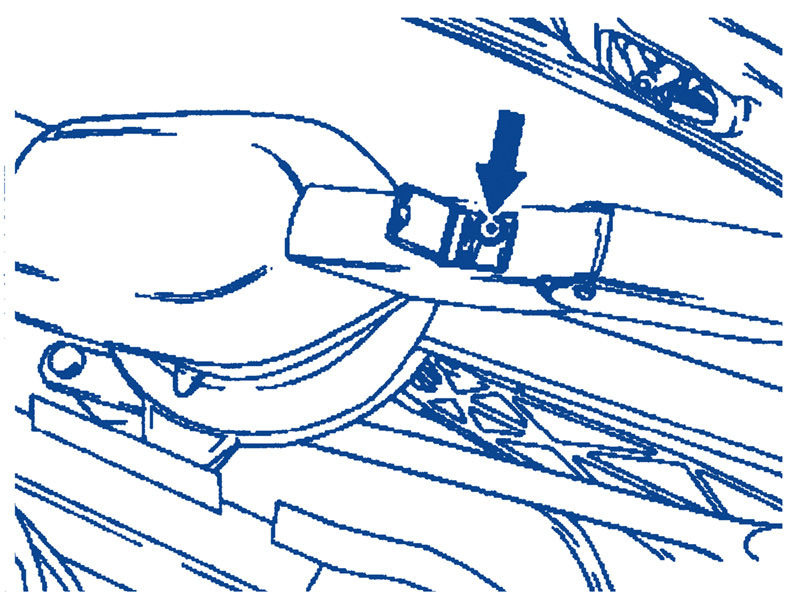 Wound-up Wiper
Wound-up Wiper
 On all the Benz models with the unique, single arm windshield wiper system, you can see that it can be necessary to build something complex to achieve something simple. One wiper arm is simpler than two, but to make it cover the windshield properly, the arm requires a relatively complex set of geared eccentrics to pulse it radially inward and outward as it cycles.
On all the Benz models with the unique, single arm windshield wiper system, you can see that it can be necessary to build something complex to achieve something simple. One wiper arm is simpler than two, but to make it cover the windshield properly, the arm requires a relatively complex set of geared eccentrics to pulse it radially inward and outward as it cycles.
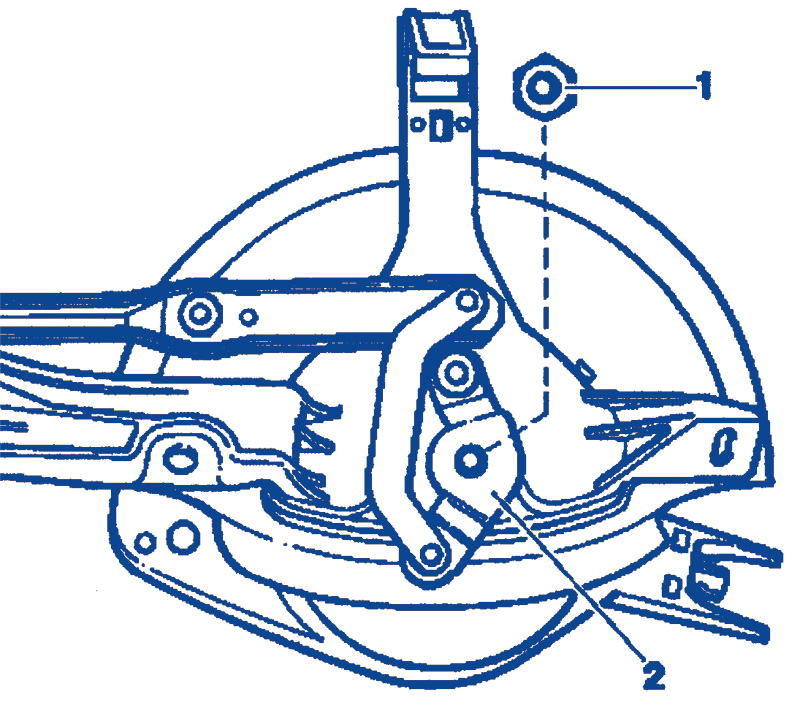 Sometimes, this single arm wiper can develop a hesitation related to its radial motion. Perhaps this comes with age, perhaps from road salt or atmospheric grit, perhaps more frequently in areas with more rain. In any case, it is often possible to disassemble the mechanism and relubricate each of the pivot joints with a suitable, water-resistant grease. Before you work on the wiper system, be sure the ignition key is removed from the car, preferably safely in your pocket so you can be sure nobody can switch it on. The system can move to the Park position as the key toggles, regardless of the wiper switch position. There’s enough torque in the wiper arm, particularly close to the shaft, to cause hand injury.
Sometimes, this single arm wiper can develop a hesitation related to its radial motion. Perhaps this comes with age, perhaps from road salt or atmospheric grit, perhaps more frequently in areas with more rain. In any case, it is often possible to disassemble the mechanism and relubricate each of the pivot joints with a suitable, water-resistant grease. Before you work on the wiper system, be sure the ignition key is removed from the car, preferably safely in your pocket so you can be sure nobody can switch it on. The system can move to the Park position as the key toggles, regardless of the wiper switch position. There’s enough torque in the wiper arm, particularly close to the shaft, to cause hand injury.
 The wiper arm comes off in two ways, as indicated, depending on the car’s vintage. Once up or down, as the case may be, with the arm fully extended unbolt the setscrew holding it. You can then lift off the arm itself, leaving the actuator head. As you disassemble the internal components, keep track of how they combine, because while there is more than one possible configuration of parts, only one configuration can work.
The wiper arm comes off in two ways, as indicated, depending on the car’s vintage. Once up or down, as the case may be, with the arm fully extended unbolt the setscrew holding it. You can then lift off the arm itself, leaving the actuator head. As you disassemble the internal components, keep track of how they combine, because while there is more than one possible configuration of parts, only one configuration can work.
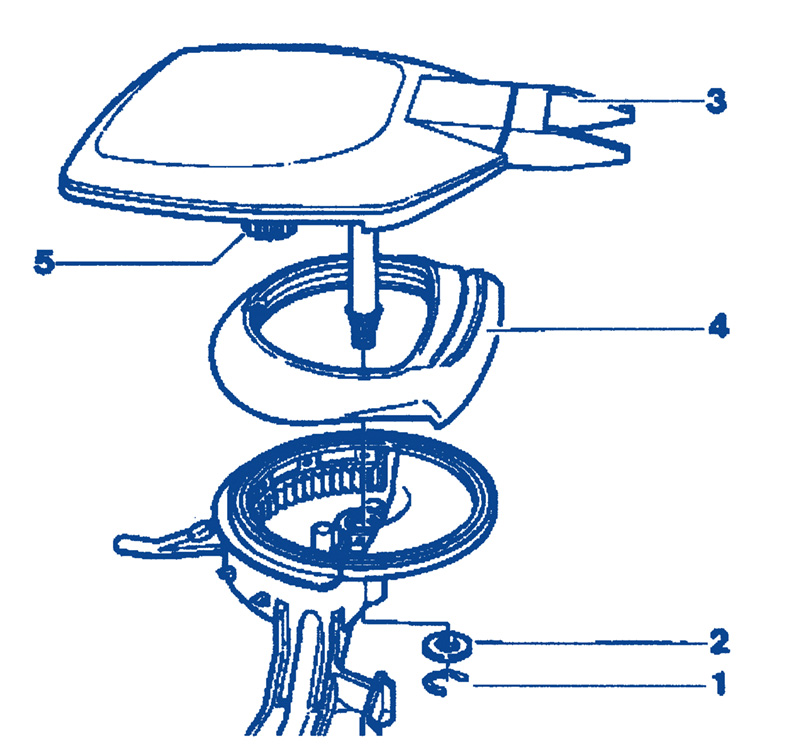 Turn the wiper hub to the vertical position and remove the attachment nuts and retaining clip. As you lift the system out, disconnect the electric connector. If you’re replacing the wiper motor, be sure to reconnect the electric harness and turn on the ignition key to confirm the shaft is in the Park position before you reassemble the mechanical links.
Turn the wiper hub to the vertical position and remove the attachment nuts and retaining clip. As you lift the system out, disconnect the electric connector. If you’re replacing the wiper motor, be sure to reconnect the electric harness and turn on the ignition key to confirm the shaft is in the Park position before you reassemble the mechanical links.
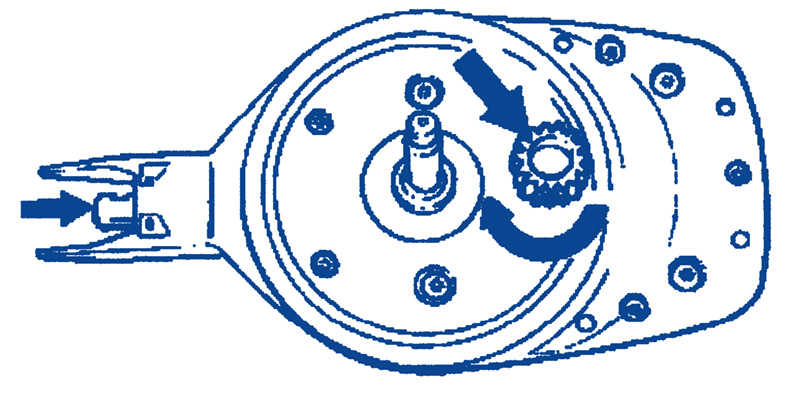 To remove the linkage from the motor, remove the nut. When reassembling the head, observe the ‘timing marks’ on the gearhead.
To remove the linkage from the motor, remove the nut. When reassembling the head, observe the ‘timing marks’ on the gearhead.
The wiper gear comes apart first by removing the snap ring and washer at the bottom. You can only take this off and apart with the arm in the center position. Don’t try to remove it with a hammer or with the forceful use of a puller. It’s good workmanship to replace the rubber seal once you’ve cleaned the gears and lubricated the works with a proper lubricant. The seal is held on with a clamp similar to those on CV joint boots. Reassemble everything with the mechanism in its center position to get the parts meshed properly.
 Meandering Miss
Meandering Miss
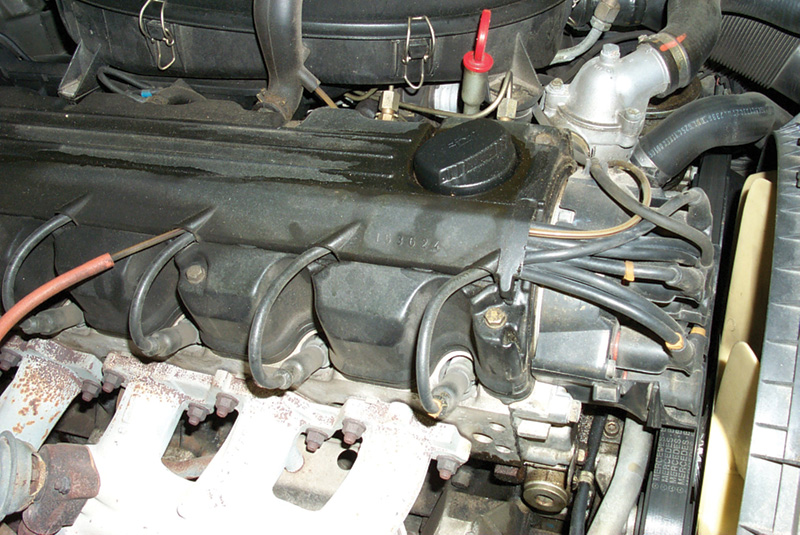 This puzzle arose on a late-model E320, but as you’ll see, it could have cropped up on almost any ‘mature’ car but the Diesels. A vague and transient cylinder miss seemed to move from one or more cylinder to others at all speeds above idle. Spark tested good; the injectors all got the same pulsewidth for the conditions. The shop dove in deeper and ran a compression test on the engine, with good results in every cylinder.
This puzzle arose on a late-model E320, but as you’ll see, it could have cropped up on almost any ‘mature’ car but the Diesels. A vague and transient cylinder miss seemed to move from one or more cylinder to others at all speeds above idle. Spark tested good; the injectors all got the same pulsewidth for the conditions. The shop dove in deeper and ran a compression test on the engine, with good results in every cylinder.
Since the CEL was on, they read the codes, which suggested the catalytic converter was dead: the oxygen sensors in front and in back read the same. Checking the voltage at the sensor harnesses confirmed this. They cycled up and down together reflecting no change as the exhaust passed through the converter. But how could a catalytic converter cause a wandering miss, unless it was so plugged up the engine couldn’t run (and then they’d have heard the characteristic plugged-cat roar from the exhaust).
Complicated problems often arise from non-obvious simple causes. Spark plug cables have a certain electrical resistance built into them, to prevent radio interference and to insure a high enough voltage for the spark. With age, heat, use and so on, this resistance always goes up. Sometimes the cables develop electric leaks through the insulation, a malady you can detect immediately with a mist of water applied to the ignition secondary with the engine running in a dark place.
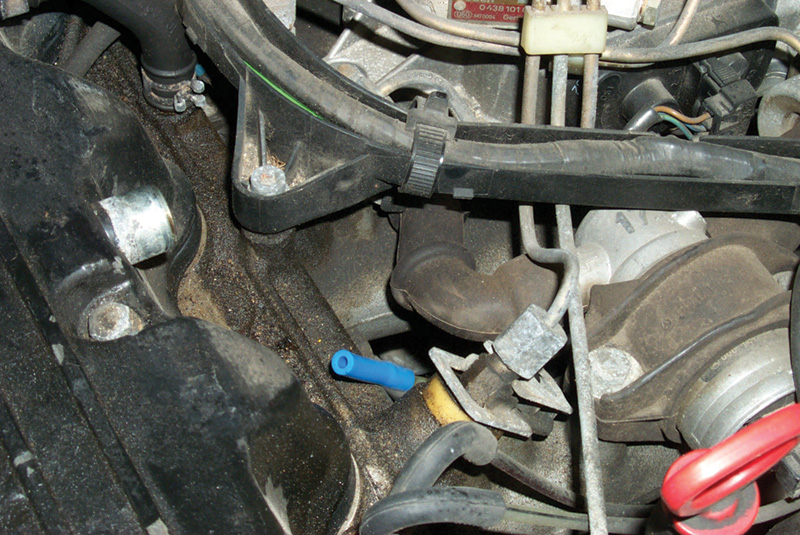 Worn spark plug wires don’t necessarily look worn – they aren’t the moving parts. Inside, the electrons can eventually start finding new paths to ground or burning the cables internally open enough to drive up the coil output to a threshold sufficient for idle, but not for any other engine load.
Worn spark plug wires don’t necessarily look worn – they aren’t the moving parts. Inside, the electrons can eventually start finding new paths to ground or burning the cables internally open enough to drive up the coil output to a threshold sufficient for idle, but not for any other engine load.
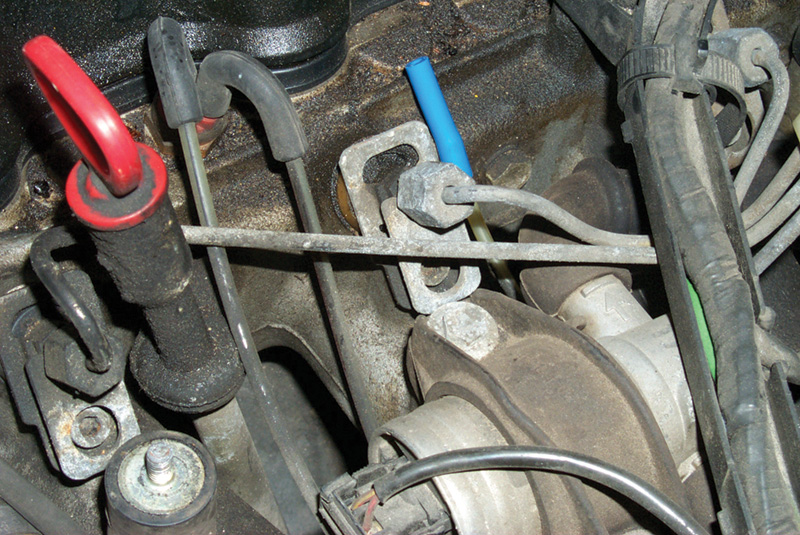 High Idle
High Idle
 Any engine can idle too fast, and the causes can be multiple, subtle and not obvious. Air leaks can develop in the idle circuits or even around the sides of the fuel injectors themselves. Some engine management systems hold the engine speed elevated when the engine is cold, so a nonfunctional coolant temperature sensor can make the engine idle too fast even if everything else works properly. Some older cars use a separate idle speed control module, usually mounted on the firewall.
Any engine can idle too fast, and the causes can be multiple, subtle and not obvious. Air leaks can develop in the idle circuits or even around the sides of the fuel injectors themselves. Some engine management systems hold the engine speed elevated when the engine is cold, so a nonfunctional coolant temperature sensor can make the engine idle too fast even if everything else works properly. Some older cars use a separate idle speed control module, usually mounted on the firewall.
There are enough different possibilities that you need relatively complete knowledge of the particular system on the particular car, as well as a good sense of the other systems that can affect it.
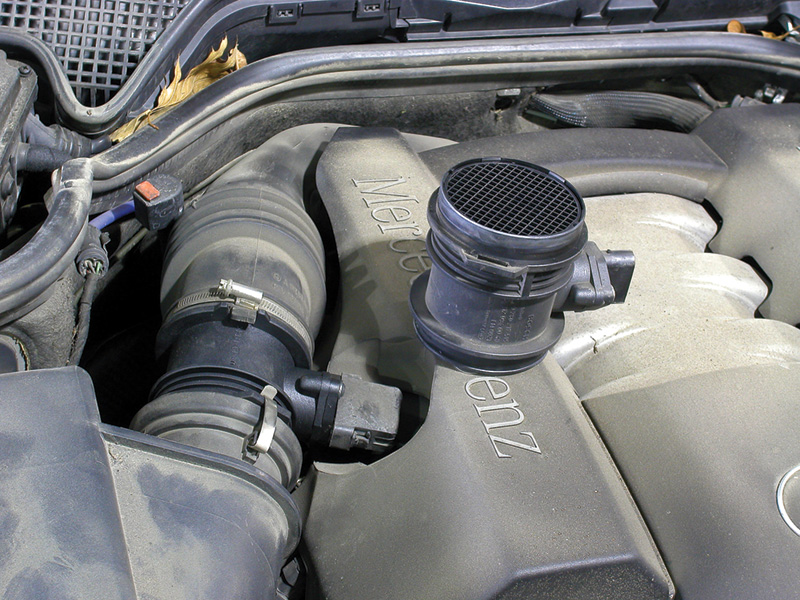 Startlessness and Sparklessness
Startlessness and Sparklessness
Coils, both waste-spark and conventional, can be very elusive and mysterious. It is easy enough for most coils (though not all!) to check the resistance of the primary and secondary circuits. Some include anti-voltage surge diodes to prevent damage to control units, but most are simply many windings of very small wires around a small, iron core.
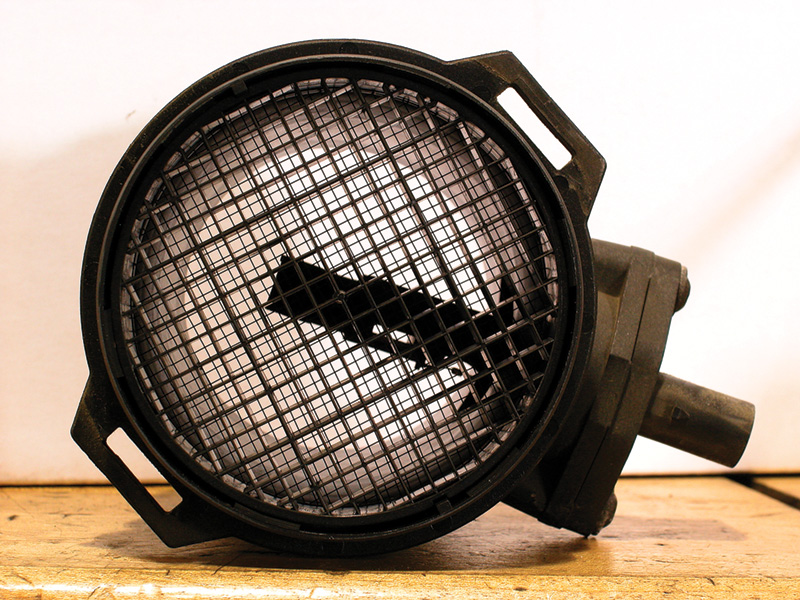 But a coil can show exactly the right static resistances under the minuscule load of an Ohmmeter but fail entirely or intermittently under the rigors of running load. The most strenuous test, of course, is under full-load acceleration, when the voltage required to bridge the electrodes of the spark plugs can go to three or four times as high as at idle.
But a coil can show exactly the right static resistances under the minuscule load of an Ohmmeter but fail entirely or intermittently under the rigors of running load. The most strenuous test, of course, is under full-load acceleration, when the voltage required to bridge the electrodes of the spark plugs can go to three or four times as high as at idle.
Only a dynamic test of a coil, a test that requires it to generate a normal, high-load spark can tell you whether it is working properly. The best way to conduct such a test is with an oscilloscope that allows you to see the shape of the primary and secondary voltage traces. On some systems where this is very difficult without dedicated special tools, it may be the best economy to keep a known-good spare coil on hand.
Lit ABS Light, Pulsing Brake Pedal
The basis of all the traction-control systems, from ABS to ESP and onward, rests on the signals from the wheelspeed sensors. While these are very robust collectors of information and generally entirely reliable, wheelspeed sensors work in some of the most challenging circumstances possible for electrical devices – bolted into the steering knuckles and wheel carriers of the car, bouncing over every bump and rut without benefit of suspension or dampers, directly contacting all the water, grit, road salt and miscellaneous abrasions of the roadway.
While it is possible for wheelspeed sensors to fail if their circuit is broken open by these various perils, more often they give rise to puzzles because the signal they generate at lower speeds migrates to lower and lower voltage levels. You don’t need much in the way of A/C voltage for the control unit to track what the wheel is doing, but there is a bottom threshold. Even more, the slower the wheel turns, the less energetically the sprocket teeth pulse the magnetic field of the sensor because of the basic physics of electromagnets.
The systems make adaptations insofar as possible to accommodate signal range variations, but the first symptoms you’re likely to see of a decline in the recognition of the signal are pulsing at the brake pedal as the ABS pump cycles on and off and/or illumination of the ABS dash light. At that point, get out your voltmeter, set it to A/C and connect it to the sensor cables.
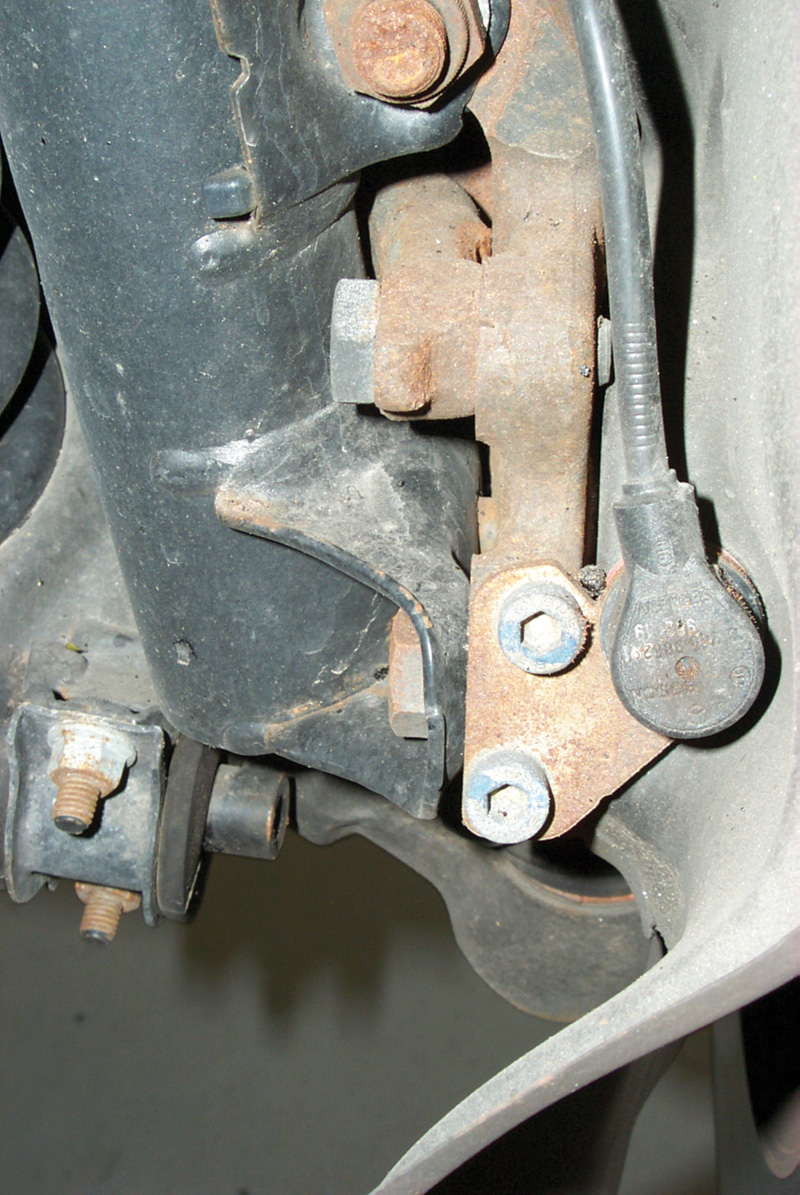 Loss of Power Without Codes OR Codes Without Loss of Power
Loss of Power Without Codes OR Codes Without Loss of Power
Mass-airflow sensors are unusual among engine management sensors in that there is seldom anything for the control unit to measure them against, a test for implausible signals. Keep in mind how the
sensor works: it generates a signal corresponding to the current required to keep its sensor wire or film at a certain temperature above the incoming air. Not only temperature, but also altitude and humidity can change that signal output. And not only those
atmospheric factors, but also such things as fuel contamination, bits of air filter paper, dust that somehow got around the filter element can all blanket part of the sensor, falsifying its report. Even more seriously, ‘false air’ leaking into the intake manifold downstream from the MAF, drives the intake mixture lean.
The computer can make certain corrections for these signal distortions, based on other information from various temperature sensors, the TPS and the oxygen sensor feedback signal, but beyond a certain point, what you’ll find is a mixture going beyond the capacity of the fuel trim to correct
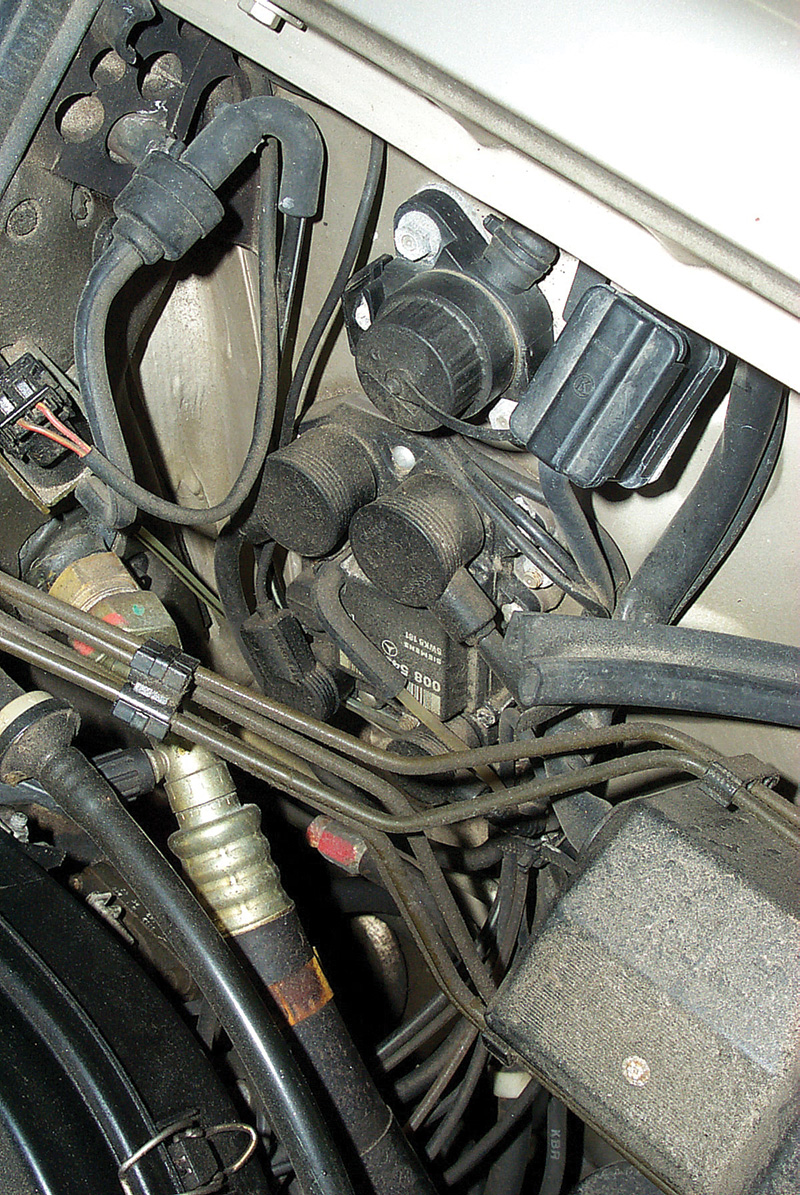 No Spark, No Fuel, No Start Or Intermittent Dead-on-the-Road
No Spark, No Fuel, No Start Or Intermittent Dead-on-the-Road
Not much will happen in an engine without fuel or spark, and a running engine that loses it will grow still very quickly. The most frequent source of these problems seems to arise from a combination of ordinary operating heat with a crankshaft position sensor that has passed its electrical maturity or an EZL module in a similar state.
You test the sensor just like a wheelspeed sensor, checking for an A/C pulse corresponding to the flywheel teeth passing beneath its pickup. No signal from the sensor means no start, loss of signal means immediate shutdown. A sensor with a signal of very low A/C voltage amplitude (a natural consequence of time and use) can produce a signal intermittently sufficient or not. Allowing the sensor or module to cool often allows them to return to normal function temporarily as the internal electrical resistance goes down.


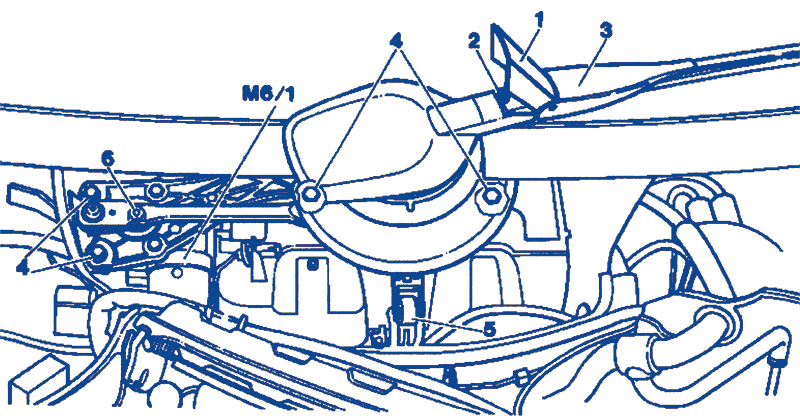




0 Comments